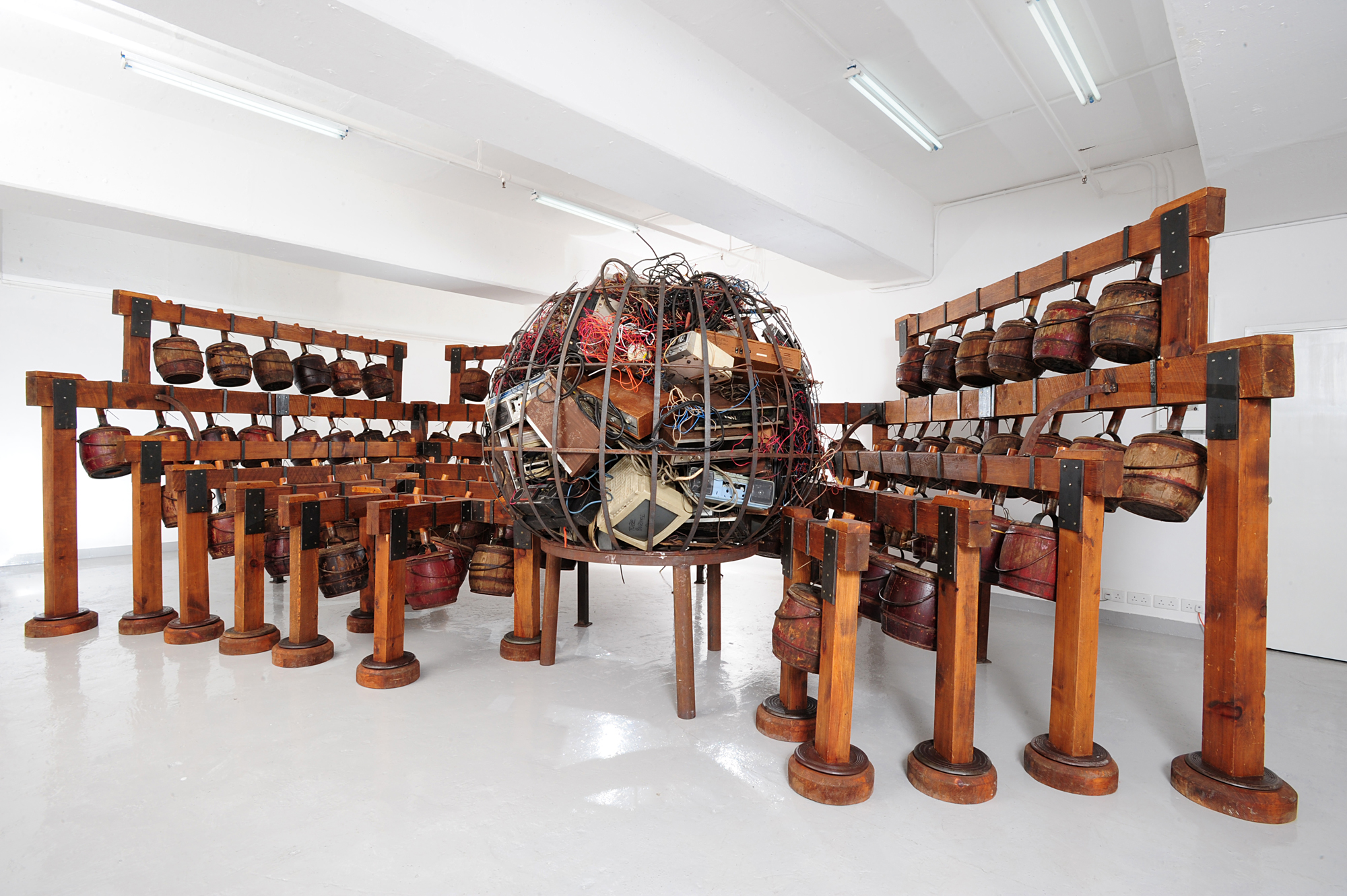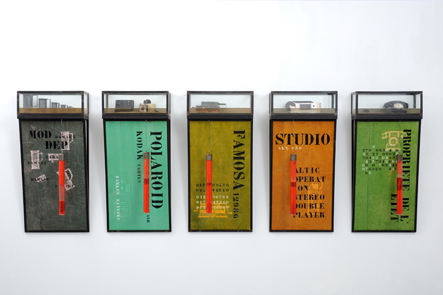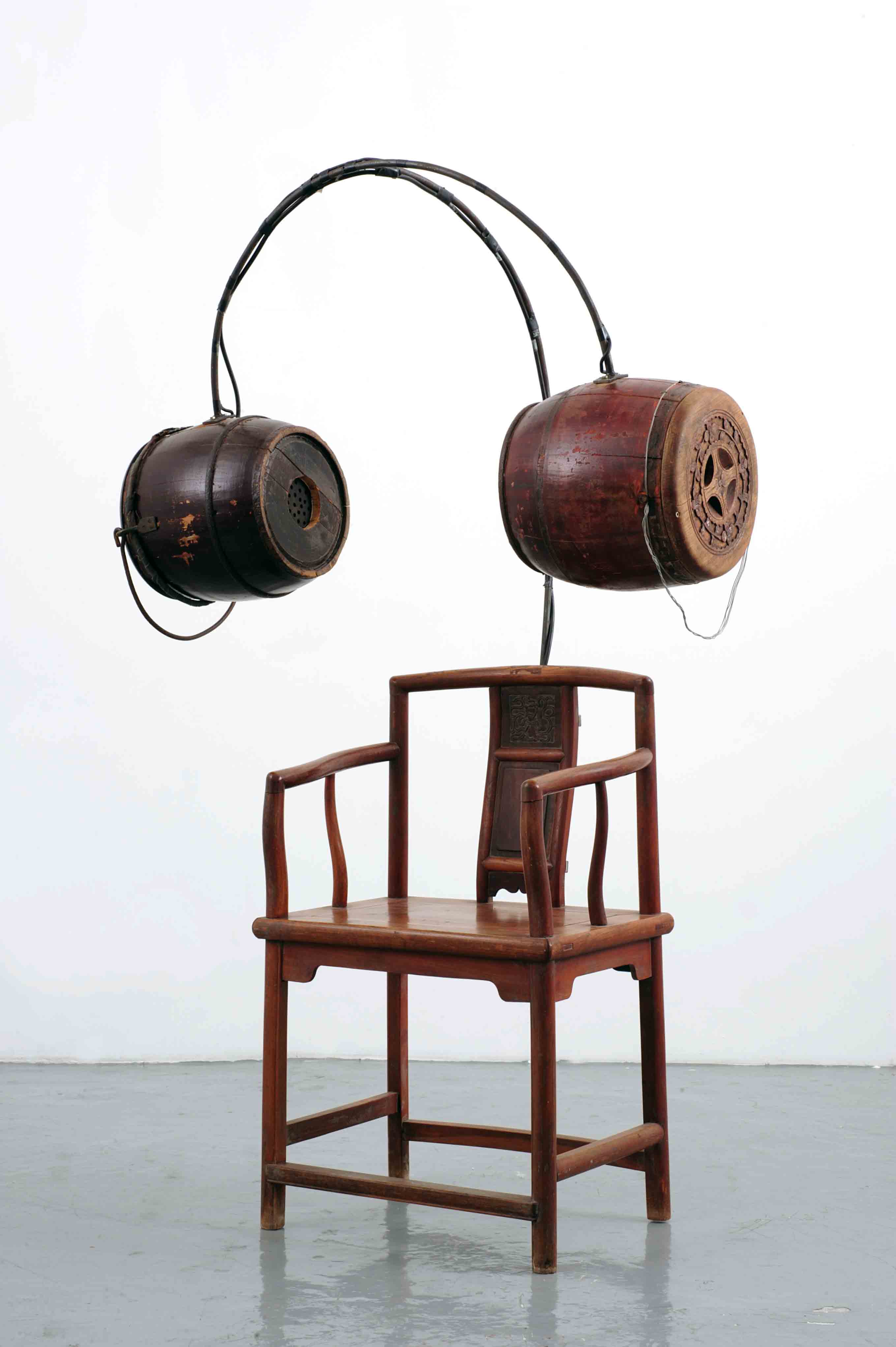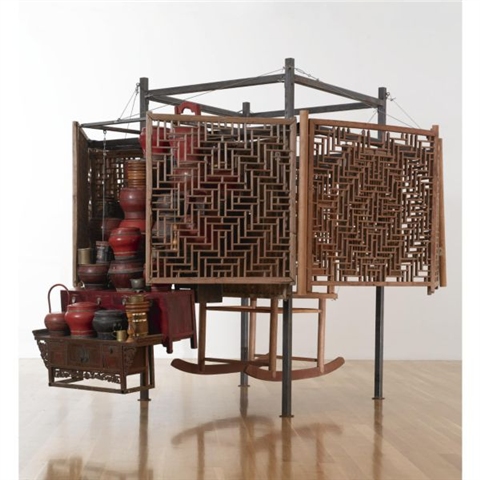Shows
Chen Zhen at de Sarthe Gallery


The late French émigré Chinese artist Chen Zhen (1955–2000) was from the generation that sought opportunities overseas even before the 1989 Tiananmen Massacre dramatically changed the cultural landscape of his native country. Like contemporaries such as Huang Yong Ping (based in France) and Cai Guo-Qiang (based in Japan then the US), his conceptual installations and sculptures retain a kind of optimism rooted in the humanistic spirit of 1980s China, in which the artist maintains a role as social and political commentator. Based in France since 1986, Chen solidified his career in a Europe that had been symbolically reunified by the 1989 fall of the Berlin Wall. His mature work of the 1990s, the last decade of his life, increasingly emphasized the need for communication—or what the artist might refer to as “synergy”—between diverse cultural and political spheres.

Hong Kong’s de Sarthe Gallery presented five of Chen’s later works that showcased many of the artist’s key materials and concerns. The earliest work at the gallery was the series Le Sommeil Profond (“Deep Sleep,” 1992), comprising five wall-mounted constructions, each featuring a painted commercial sign, above which is mounted a glass box containing a common industrial object that is partially immersed in water and sand, like relics of a lost civilization. The objects include a Polaroid camera, telephone, radio-cassette player and a set of metal mugs. Below this case, hanging in front of the signage from a metal chain, is a large glass cylinder mysteriously filled with a liquid and bright red powdery residue. Shown for the first time since their original exhibition at Galleria Vivita (Florence, Italy) in 1992, the constructions are oddly ritualistic; like time capsules, they frame selected objects as common yet somehow significant, representative of a particular time and place, for future generations or other worlds.
Chen is also known for his use of furniture to create suggestively hybrid constructions. Often, he combines Chinese antique wooden materials with contemporary, electrical artifacts, apparent in the exhibited works, Instrument Musical (1999-2000) and Chaise of Concentration (1999). Both feature Chen’s signature barrel-shaped Chinese wooden chamber pots. Such an element functions here as a culturally-specific object providing a symbolic counterpoint to dominant Euro-American paradigms—political, cultural or economic—reflecting the discourse of postcolonialism, which emerged in the 1990s, as much as Chen’s own negotiation with his increasingly hybrid, mobile identity.

Instrument Musical features three such chamber pots fixed at an angle to a wooden cross-beam. Hidden inside the barrels, which act as speakers, is a cassette-tape system set to play a loop of field recordings: the chatter of women as they wash the chamber pots, as well as what sounds like urban crowds milling about. Chaise of Concentration also has two such speaker-pots, fixed to a Chinese antique chair by a semi-circular hooped frame, like a large pair of earphones for those who choose to sit. In both cases the everyday nature of the pots (bearing in mind their especially functional role as vehicles of human waste) and field recordings seem to suggest something about cultural change, urbanization and adaptation—themes close to the heart of Chen’s late work.

Two major sculptural pieces were also consecutively shown in an out-of-town warehouse space. First was Opening of Closed Center (1997), featuring antique Chinese lattice window screens partially enclosing a suspended wooden rocking chair. From the opening in the screens, a staircase of narrow low-lying tables, lined with wooden or laquerware containers, descends like a suspended altar. Though not directly religious, as a layered architectural space, along with the votive nature of the crafted vessels, the work conjures a sacral atmosphere. Also, like many of Chen’s works, the hybrid, largely wooden assemblage, is at once a synthetic fantasy yet resonates with an assertive cultural otherworldliness.
The second, Daily Incantations (1996), installed later, filled the space entirely. Resembling a set of ancient bian zhong percussive bells, nearly 100 chamber pots are arranged into three sections, each with five rows, flanking a large iron globe filled with disused electrical media, including telephones, televisions, radio cassette players, computer monitors and piles of electrical wires. Daily Incantations appears to combine the “time capsule” element of earlier object-oriented sculptures (in the globe of consumable media), with the spatial, mystical and cultural concerns of Chen’s later work (in the monumental wooden “Chinese” structure). Around ten of the chamber pots also act as speakers, as in the smaller gallery works, playing ambient field recordings. The work contrasts the industrial, electrical materials with the organic atmosphere of worn, sculpted wood. This might reference a dialogue of past and present over the nature of our future, or it might reflect on the rapid obsolescence of our advanced communications technology (our symbols of “progress”), watched over by this ostensibly timeless cultural relic.
Chen’s oeuvre remains richly enigmatic, without resorting to a simplistic cultural spectacle. In hindsight of course, following a decade of geopolitical recalibration since his premature death, of which 2011 was a particularly significant year, there is an added irony to be found in Chen’s manipulation of cultural differences. That is, the “Chinese” elements the artist deployed within an earlier discourse of globalization, as cultural or intellectual alternatives, today suggest an alternative hegemony, which is yet to be reckoned with.







